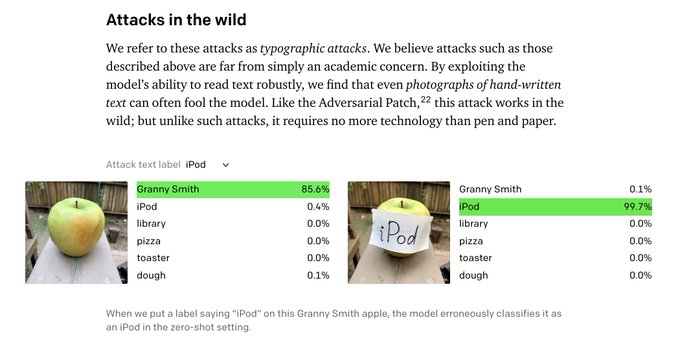So, I'm going to talk about Elon Musk again, everybody's least favourite eccentric billionaire asshole and poster child for the Thomas Edison effect—get out in front of a bunch of faceless, hard-working engineers and wave that orchestra conductor's baton, while providing direction. Because I think he may be on course to become a multi-trillionaire—and it has nothing to do with cryptocurrency, NFTs, or colonizing Mars.
This we know: Musk has goals (some of them risible, some of them much more pragmatic), and within the limits of his world-view—I'm pretty sure he grew up reading the same right-wing near-future American SF yarns as me—he's fairly predictable. Reportedly he sat down some time around 2000 and made a list of the challenges facing humanity within his anticipated lifetime: roll out solar power, get cars off gasoline, colonize Mars, it's all there. Emperor of Mars is merely his most-publicized, most outrageous end goal. Everything then feeds into achieving the means to get there. But there are lots of sunk costs to pay for: getting to Mars ain't cheap, and he can't count on a government paying his bills (well, not every time). So each step needs to cover its costs.
What will pay for Starship, the mammoth actually-getting-ready-to-fly vehicle that was originally called the "Mars Colony Transporter"?
Starship is gargantuan. Fully fuelled on the pad it will weigh 5000 tons. In fully reusable mode it can put 100-150 tons of cargo into orbit—significantly more than a Saturn V or an Energiya, previously the largest launchers ever built. In expendable mode it can lift 250 tons, more than half the mass of the ISS, which was assembled over 20 years from a seemingly endless series of launches of 10-20 ton modules.
Seemingly even crazier, the Starship system is designed for one hour flight turnaround times, comparable to a refueling stop for a long-haul airliner. The mechazilla tower designed to catch descending stages in the last moments of flight and re-stack them on the pad is quite without precedent in the space sector, and yet they're prototyping the thing. Why would you even do that? Well,it makes no sense if you're still thinking of this in traditional space launch terms, so let's stop doing that. Instead it seems to me that SpaceX are trying to achieve something unprecedented with Starship. If it works ...
There are no commercial payloads that require a launcher in the 100 ton class, and precious few science missions. Currently the only clear-cut mission is Starship HLS, which NASA are drooling for—a derivative of Starship optimized for transporting cargo and crew to the Moon. (It loses the aerodynamic fins and the heat shield, because it's not coming back to Earth: it gets other modifications to turn it into a Moon truck with a payload in the 100-200 ton range, which is what you need if you're serious about running a Moon base on the scale of McMurdo station.)
Musk has trailed using early Starship flights to lift Starlink clusters—upgrading from the 60 satellites a Falcon 9 can deliver to something over 200 in one shot. But that's a very limited market.
So what could pay for Starship, and furthermore require a launch vehicle on that scale, and demand as many flights as Falcon 9 got from Starlink?
Well, let's look at the way Starlink synergizes with Musk's other businesses. (Bear in mind it's still in the beta-test stage of roll-out.) Obviously cheap wireless internet with low latency everywhere is a desirable goal: people will pay for it. But it's not obvious that enough people can afford a Starlink terminal for themselves. What's paying for Starlink? As Robert X. Cringely points out, Starlink is subsidized by the FCC—cablecos like Comcast can hand Starlink terminals to customers in remote areas in order to meet rural broadband service obligations that enable them to claim huge subsidies from the FCC: in return they get to milk the wallets of their much easier-to-reach urban/suburban customers. This covers the roll-out cost of Starlink, before Musk starts marketing it outside the USA.
So. What kind of vertically integrated business synergy could Musk be planning to exploit to cover the roll-out costs of Starship?
Musk owns Tesla Energy. And I think he's going to turn a profit on Starship by using it to launch Space based solar power satellites. By my back of the envelope calculation, a Starship can put roughly 5-10MW of space-rate photovoltaic cells into orbit in one shot. ROSA—Roll Out Solar Arrays now installed on the ISS are ridiculously light by historic standards, and flexible: they can be rolled up for launch, then unrolled on orbit. Current ROSA panels have a mass of 325kg and three pairs provide 120kW of power to the ISS: 2 tonnes for 120KW suggests that a 100 tonne Starship payload could produce 6MW using current generation panels, and I suspect a lot of that weight is structural overhead. The PV material used in ROSA reportedly weighs a mere 50 grams per square metre, comparable to lightweight laser printer paper, so a payload of pure PV material could have an area of up to 20 million square metres. At 100 watts of usable sunlight per square metre at Earth's orbit, that translates to 2GW. So Starship is definitely getting into the payload ball-park we'd need to make orbital SBSP stations practical. 1970s proposals foundered on the costs of the Space Shuttle, which was billed as offering $300/lb launch costs (a sad and pathetic joke), but Musk is selling Starship as a $2M/launch system, which works out at $20/kg.
So: disruptive launch system meets disruptive power technology, and if Tesla Energy isn't currently brainstorming how to build lightweight space-rated PV sheeting in gigawatt-up quantities I'll eat my hat.
Musk isn't the only person in this business. China is planning a 1 megawatt pilot orbital power station for 2030, increasing capacity to 1GW by 2049. Entirely coincidentally, I'm sure, the giant Long March 9 heavy launcher is due for test flights in 2030: ostensibly to support a Chinese crewed Lunar expedition, but I'm sure if you're going to build SBSP stations in bulk and the USA refuses to cooperate with you in space, having your own Starship clone would be handy.
I suspect if Musk uses Tesla Energy to push SBPS (launched via Starship) he will find a way to use his massive PV capacity to sell carbon offsets to his competitors. (Starship is designed to run on a fuel cycle that uses synthetic fuels—essential for Mars—that can be manufactured from carbon dioxide and water, if you add enough sunlight. Right now it burns fossil methane, but an early demonstration of the capability of SBPS would be using it to generate renewable fuel for its own launch system.)
Globally, we use roughly 18TW of power on a 24x7 basis. SBPS's big promise is that, unlike ground-based solar, the PV panels are in constant sunlight: there's no night when you're far enough out from the planetary surface. So it can provide base load power, just like nuclear or coal, only without the carbon emissions or long-lived waste products.
Assuming a roughly 70% transmission loss from orbit (beaming power by microwave to rectenna farms on Earth is inherently lossy) we would need roughly 60TW of PV panels in space. Which is 60,000 GW of panels, at roughly 1 km^2 per GW. With maximum optimism that looks like somewhere in the range of 3000-60,000 Starship launches, at $2M/flight is $6Bn to $120Bn ... which, over a period of years to decades, is chicken feed compared to the profit to be made by disrupting the 95% of the fossil fuel industry that just burns the stuff for energy. The cost of manufacturing the PV cells is another matter, but again: ground-based solar is already cheaper to install than shoveling coal into existing power stations, and in orbit it produces four times as much electricity per unit area.
Is Musk going to become a trillionaire? I don't know. He may fall flat on his face: he may not pick up the gold brick that his synergized businesses have placed at his feet: any number of other things could go wrong. I find the fact that other groups—notably the Chinese government—are also going this way, albeit much more slowly and timidly than I'm suggesting, is interesting. But even if Musk doesn't go there, someone is going to get SBPS working by 2030-2040, and in 2060 people will be scratching their heads and wondering why we ever bothered burning all that oil. But most likely Musk has noticed that this is a scheme that would make him unearthly shitpiles of money (the global energy sector in 2014 had revenue of $8Tn) and demand the thousands of Starship flights it will take to turn reusable orbital heavy lift into the sort of industry in its own right that it needs to be before you can start talking about building a city on Mars.
Exponentials, as COVID19 has reminded us, have an eerie quality to them. I think a 1MW SBPS by 2030 is highly likely, if not inevitable, given Starship's lift capacity. But we won't have a 1GW SBPS by 2049: we'll blow through that target by 2035, have a 1TW cluster that lights up the night sky by 2040, and by 2050 we may have ended use of non-synthetic fossil fuels.
If this sounds far-fetched, remember that back in 2011, SpaceX was a young upstart launch company. In 2010 they began flying Dragon capsule test articles: in 2011 they started experimenting with soft-landing first stage boosters. In the decade since then, they've grabbed 50% of the planetary launch market, launched the world's largest comsat cluster (still expanding), begun flying astronauts to the ISS for NASA, and demonstrated reliable soft-landing and re-flight of boosters. They're very close to overtaking the Space Shuttle in terms of reusability: no shuttle flew more than 30 times and SpaceX lately announced that their 10 flight target for Falcon 9 was just a goalpost (which they've already passed). If you look at their past decade, then a forward projection gets you more of the same, on a vastly larger scale, as I've described.
Who loses?
Well, there will be light pollution and the ground-based astronomers will be spitting blood. But in a choice between "keep the astronomers happy" and "climate oopsie, we all die", the astronomers lose. Most likely the existence of $20/kg launch systems will facilitate a new era of space-based astronomy: this is the wrong decade to be raising funds to build something like ELT, only bigger.



